A FEW WORDS ABOUT SILPHA LAEVIGATA
Insects are the most varied, species - rich life forms on this planet ... and as far as we currently know - they could be wearing this title even for the entire universe. So is not a surprise, that you can encounter many species in your everyday life that aren't easy to find and determine through the simple internet search of a non - expert in that field. And even if you somehow find some of the more obscure, less iconic insects, there is a good chance that not much data will be available.
 (Enlargeable)
(Enlargeable)Here on my hand ... on this enlargeable picture, you can take a good look at one of those species - the Silpha laevigata beetle, a pretty common insect in my surroundings ... but quite uncommon and hard to find on the internet.
The only fact I found about it is that it's a predator of terrestrial snails and that the adult beetles are mostly nocturnal ...
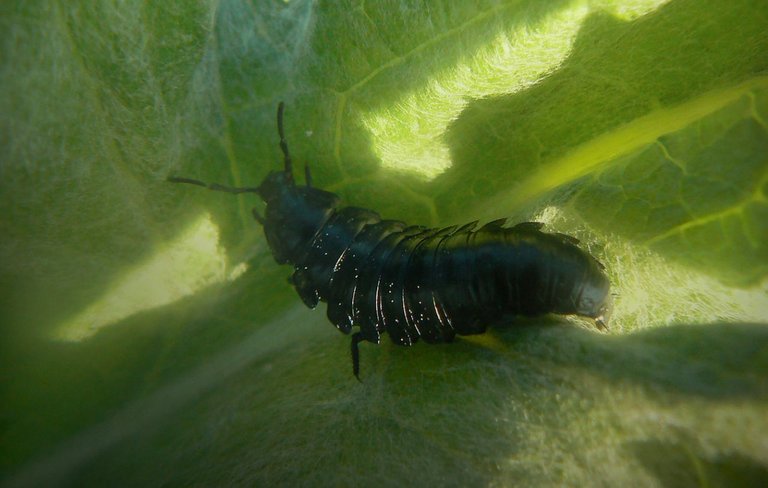
... so what follows in the text department of this post ... is just a bunch of my simple, non - professional observations and description of what I saw while taking these photographs. Here you can see the larval version of this beetle ...
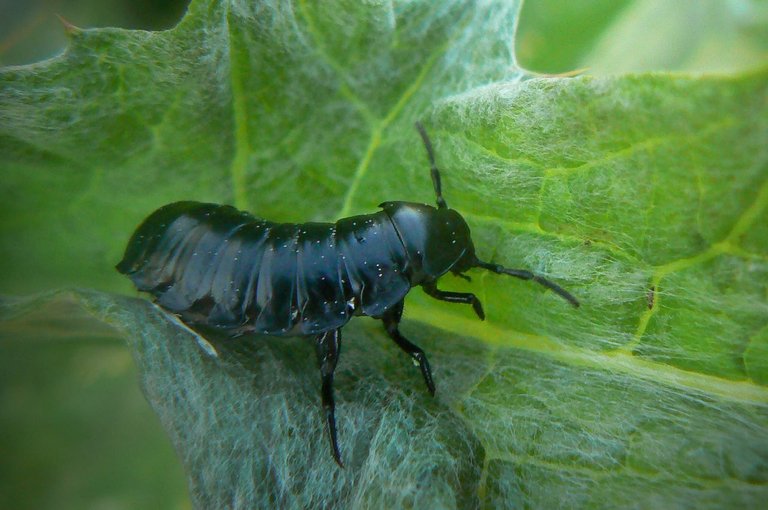
... exploring the large, folded leaf of the Woolly thistle (Cirsium eriophorum) filled with thorns.

It's a nice, sheltered place to rest. The larva will spend some hot, summer's day hours, quiet between these thorns. When not sleepy like on this shot, the larvae are pretty long and very fast and agile.
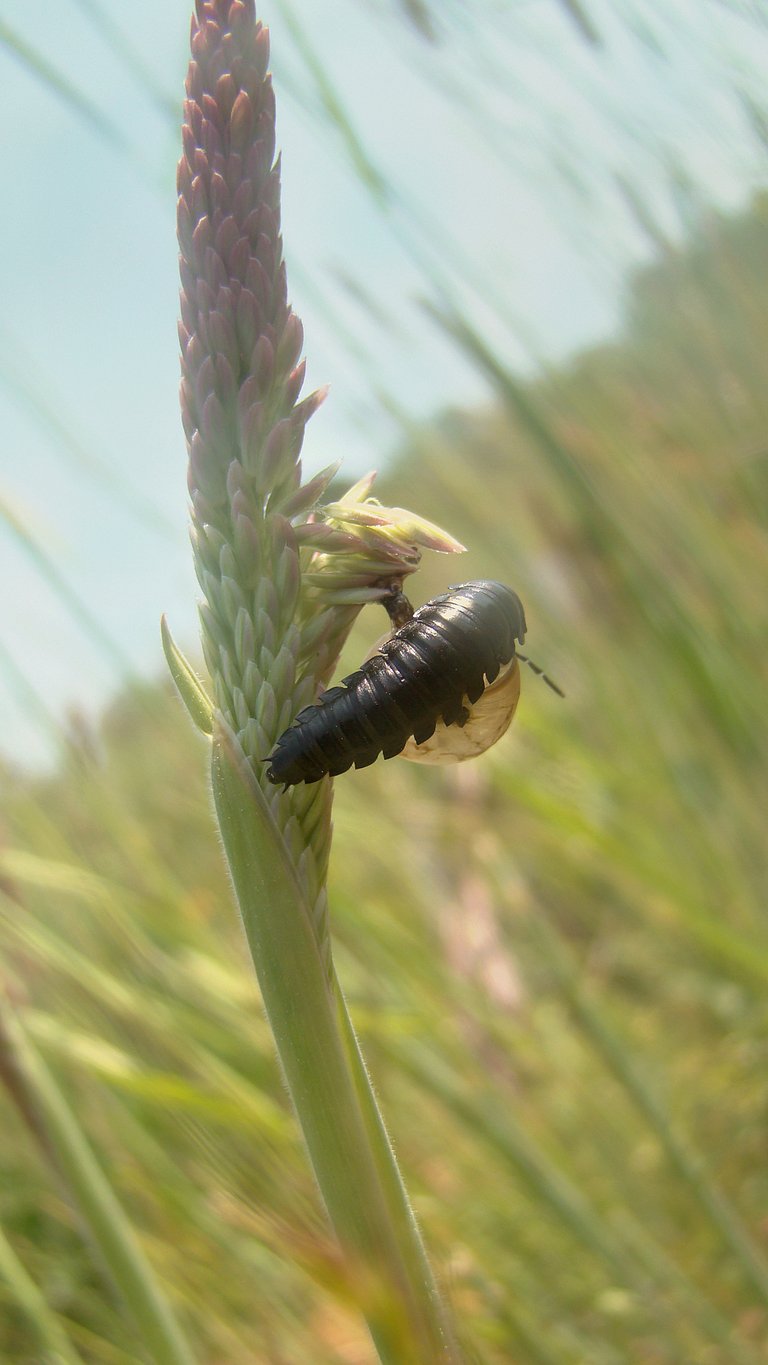 (Enlargeable)
(Enlargeable)I often see them running through the thorny mix of Mediterranean vegetation ... or up and down the long stems of various grasses on the open, sunny meadows ... in search for a shelled meal. Just like adults, the larvae are also snail - hunters ... and they are perfectly shaped for this task. On the photograph above you can see a larva that is about to finish its meal, the snail's shell is almost completely empty ... while on the following shot ...
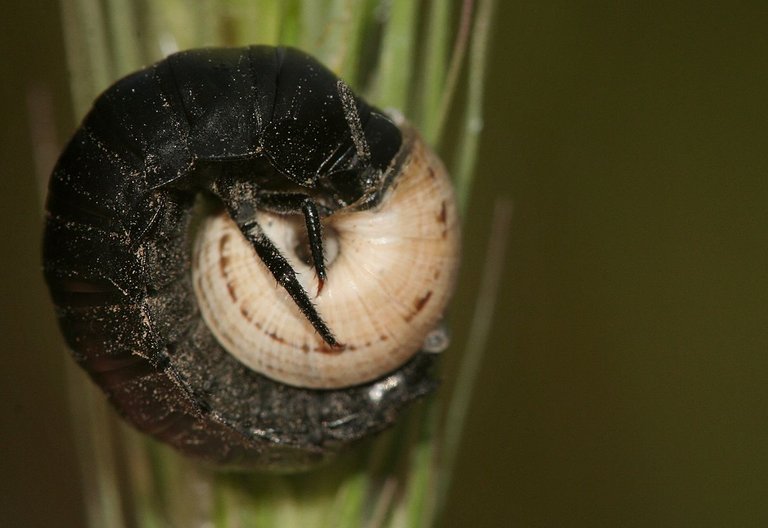
... another larvae has just begun the attack.
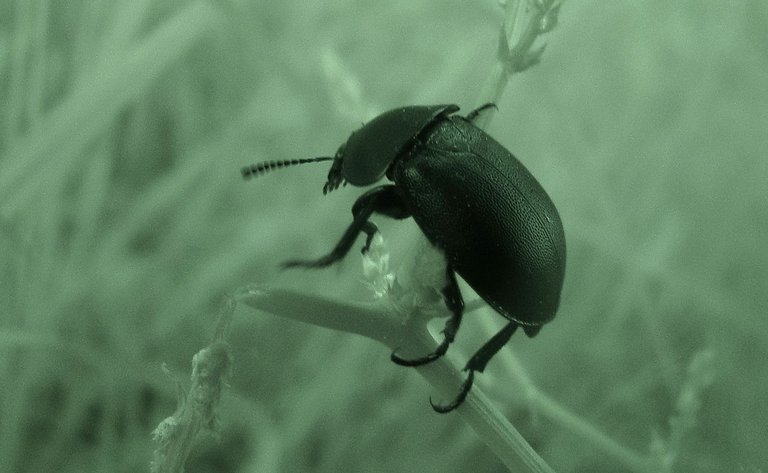
On this shot, taken with the night - view option of my camera, you can see the adult beetle in the late evening. I encounter them mostly on the dry, rocky terrain, on the thorny shrubs and dusty roads near the sea. And now ...
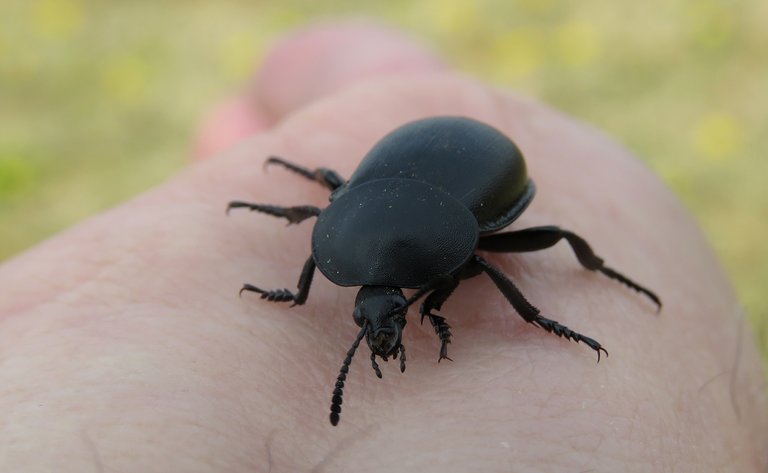 (Enlargeable)
(Enlargeable)... with another enlargeable portrait on the palm of my hand ... is time to end this short look at this beetle's life. As always in these posts on HIVE, all the photographs are my work.
Thank you :)
Wow! I never knew these were in lavas forms before having hard wings!!
We have something similar but with bigger horns! My cats like to chase them at night when the we’re playing with the wall lamp and drop down to the ground.
Larva similar to Gromphadorhina portentosa)
True ... pretty strong similarity for the very different type of insect.
Another great post, stunning shots.
Thanks :)
Those are really cool pictures. Good work
Thank you :)
This post has been voted on by the STEMsocial curation team and voting trail. It is eligible for support from @curie and @minnowbooster.
If you appreciate the work we are doing, then consider supporting our funding proposal, approving our witness (@stem.witness) or delegating to the @steemstem account (for some ROI).
For additional information please join us on the STEMsocial discord and to get to know the rest of the community!
Thanks for having used the stem.openhive.network app. This granted you a stronger support from SteemSTEM. Note that including @steemstem in the list of beneficiaries of this post could have yielded an even more important support.
Thank you
A hunter and a hunted in every circumstance. This is an amazing post. I'm glad you're not an expert, because this was very entertaining, in accessible language. I kept looking at the sixth frame: the larva on the attack. There's something existential about this post (maybe because right now I'm the hunted, hiding out from COVID19, the hunter).
Great job @borjan!
:) Thank you ! I don't get these action shots, like when the larva is attacking, very often, so it's a celebration when it happens ... and is a great feeling to witness some situations in nature, in life of small animals, that are usually hidden to humans.